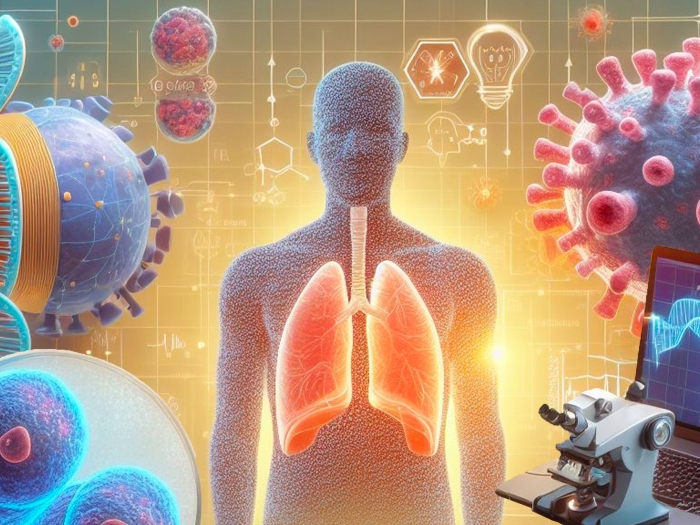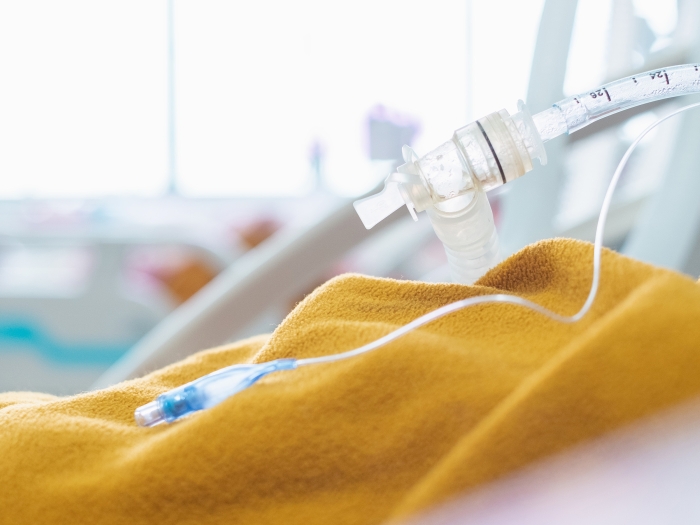Marlena McCree was diagnosed with asthma at age 23. It took her more than 30 years to finally get it under control with biologics.
12:07 PM
Author |

Last summer, Marlena McCree went for a kayak ride. It was a monumental step for the 57-year-old — and confirmation that she had finally found the right treatment for her severe asthma.
The treatment, drugs known as biologics, would take years to make its way to McCree, who credits University of Michigan Health pulmonologist Njira Lugogo, M.D., for giving her a chance to finally breathe.
"Biologics are a newer class of drugs that attack asthma at the cellular level versus simply treating a patient's symptoms," said Lugogo. "They have shown promising results for patients with severe asthma."
An unfamiliar diagnosis
The Detroit grandmother of 13 was diagnosed with asthma at age 23 and spent the next three decades going back and forth between doctor appointments, trying new inhalers, steroids and other medications. At her sickest, McCree was intubated three times — not knowing if she would live to see another day.
McCree's severe symptoms also had her in and out of hospitals, including three times in 2017. But she was never able to find relief until meeting with Lugogo in 2018.
"Dr. Lugogo diagnosed me with eosinophilic asthma, something I had never heard of before," said McCree. "I was happy to hear there were treatments that could help."
Eosinophilic asthma, or e-asthma, is a severe type of lung disease most often seen in adult patients, although it also occurs in younger individuals. An e-asthma diagnosis is considered if a patient uses a rescue inhaler often to control asthma symptoms, experiences asthma attacks that require emergency care or takes oral steroids to treat the condition.
"I suspected e-asthma because the patient was very sensitive to oral steroids," said Lugogo. "She also had frequent exacerbations, along with a history of allergies and excess nasal congestion, which are symptoms of the condition."
Finally, the right treatment
To confirm her suspicion, Lugogo relied on biomarkers, measurable characteristics of the body that can help diagnose certain conditions.
Different biomarker testing can help identify specific types of asthma. These include a blood test to measure a patient's eosinophils, a type of white blood cell that contributes to inflammation in the lungs.
"Eosinophils are a useful and impactful biomarker for diagnosing patients," said Lugogo. "A patient's blood eosinophil counts can predict his or her responsiveness to steroid therapy and certain biological therapies."
E-asthma patients like McCree are typically treated with a combination of oral steroids and biologics, which are man-made proteins that prevent inflammation by acting on specific substances in the body's immune system.
"We also test for increased levels of exhaled nitric oxide and allergies to determine if a patient is sensitive to the environment. These biomarkers help us understand the type of inflammation a patient has and enable us to treat them more effectively."
There are currently four biologics — Dupixent, Nucala, Fasenra and Cinqair — that target pathways affecting eosinophils. A fifth biologic, Xolair, targets Immunoglobulin E that is critical in treating allergic responses.
But, Lugogo cautions, "These are not a cure – they are considered a treatment. And some patients are super responders while others may not respond at all."
For those who suffer from asthma, Lugogo stresses that good asthma control is an achievable goal and that there are many new treatment options available.
"If you have asthma, don't just give in to it and let it rule your life," Lugogo said. "Many patients adjust their activities around their breathing doing less and less. If biologics aren't the answer for you, self-advocate to find a better way to treat your asthma so you can enjoy a better quality of life."
For McCree, biological therapy has meant finally getting on with her life.
"I depended on my three children to do so much for me over the years and missed a lot of their childhood events." But she's making up for lost time with regular bowling outings, summertime kayaking and enjoying her 13 grandchildren, ages four through 19.
"Playing with them is a fun activity," she said. One that she's forever thankful to be a part of.

Explore a variety of healthcare news & stories by visiting the Health Lab home page for more articles.

Department of Communication at Michigan Medicine
Want top health & research news weekly? Sign up for Health Lab’s newsletters today!





